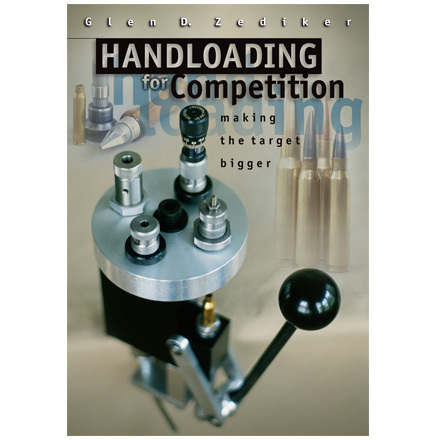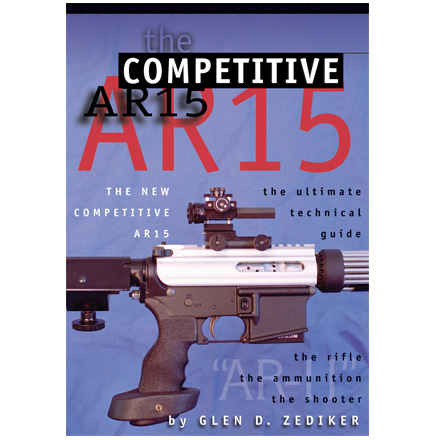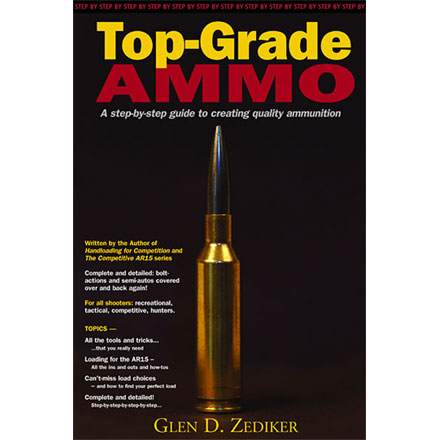Cartridge Brass Wisdom for Semi-Auto Shooters by Zediker

Here are highlights from an article Glen Zediker wrote for the Midsouth Blog. In this article Glen focuses on cartridge brass for semi-auto rifles, AR-platform guns in particular. Glen notes that semi-autos are tougher on brass than bolt-action rifles, so you need strong, durable brass, that has been full-length sized. And you need to be careful about neck tension, and primers. The article starts with Glen’s recommendations for tough, hard brass, and then includes the points outlined below.
Glen is the author of many excellent books on reloading. This article is adapted from Glen’s books, Handloading For Competition and Top-Grade Ammo, available at Midsouth HERE. For more information about other books by Glen, visit ZedikerPublishing.com.

Handloading for Competition |

The Competitive AR-15 |

Top-Grade Ammo |
ONE: Full Length-Size Cases with Adequate Shoulder Set-Back
This is a huge source of debate… amongst my readers, but, since now I’m strictly speaking of semi-auto needs I doubt there will be much dissent: full-length resize all cases! Most cases from most semi-autos will emerge with a pretty well-blown case shoulder [taming down an excessively functioning gas system can reduce this]. Make double-sure you’re sizing the cases down to at least 0.003 clearance. If you don’t there are safety and function problems ahead.
TWO: USE Sufficient Neck Tension
The case neck [must be] reduced an adequate amount to retain the bullet. There should be a minimum net difference of 0.003 inches (three-thousandths) between sized outside case neck diameter and loaded round outside case neck diameter. [Editor — that means at least three thou of “grip”.] Reason: don’t take a chance of inadvertent bullet movement during the recoil and feeding cycles. That movement can be back or forward! It’s easily possible for a bullet to jump ahead when the inertia from the bolt carrier assembly chambers the next round.

THREE: Use Tough Primers
Choose a tough primer! There’s a floating firing pin on an AR15 (M1A also) that is supposed to be held in check but that system doesn’t always work! If you load and extract a round and see a little dimple in the primer, that’s from the firing pin tapping off of it (again, created by inertia of bolt closing). A combination of a high primer and a sensitive primer cup assembly can create a “slam-fire”. Brands? CCI has some mil-spec primers that work well, and I’ve had great success with Remington 7-1/2. Some of the well-respected “match” primers are a little thin. The CCI and Remington also hold up well to the (sometimes) greater firing forces working on the primer (again, from the quick unlocking).
Here’s what I use from Midsouth.
FOUR: Be Sure to Seat Primers Below Flush
And, finally, make double-sure that each and every primer is seated to below flush with the case head! That’s true for any firearm (because it also means that the primer is fully seated) but imperative for safety in a semi-auto. This is especially an issue for those who use a progressive-type loading press.
Similar Posts:
- Tech Tips for Priming Cases More Efficiently and Safely
- Inspect Your Fired Brass to Avoid Catastrophic Case Failures
- Glen Zediker Offers Smart Advice on Priming
- Case Priming Procedures — Insights from Glen Zediker
- Smart Advice for Efficient and Safe Case Priming
Share the post "Cartridge Brass Wisdom for Semi-Auto Shooters by Zediker"
Tags: Cartridge Brass, FL Sizing, Glen Zediker, Lapua Brass, Nosler Brass, Primer Seating, Primers, Reloading


















Personally I like reloading for semi auto rifles in 223 or 308 where I can buy hundreds or thousands of cases sized and prepped for next to nothing. Use it once and forget it. I have no problems keeping groups under 1 moa out to 600 with bulk brass. I watch for loose primer pockets and bullets that seat harder then others and so far so good.